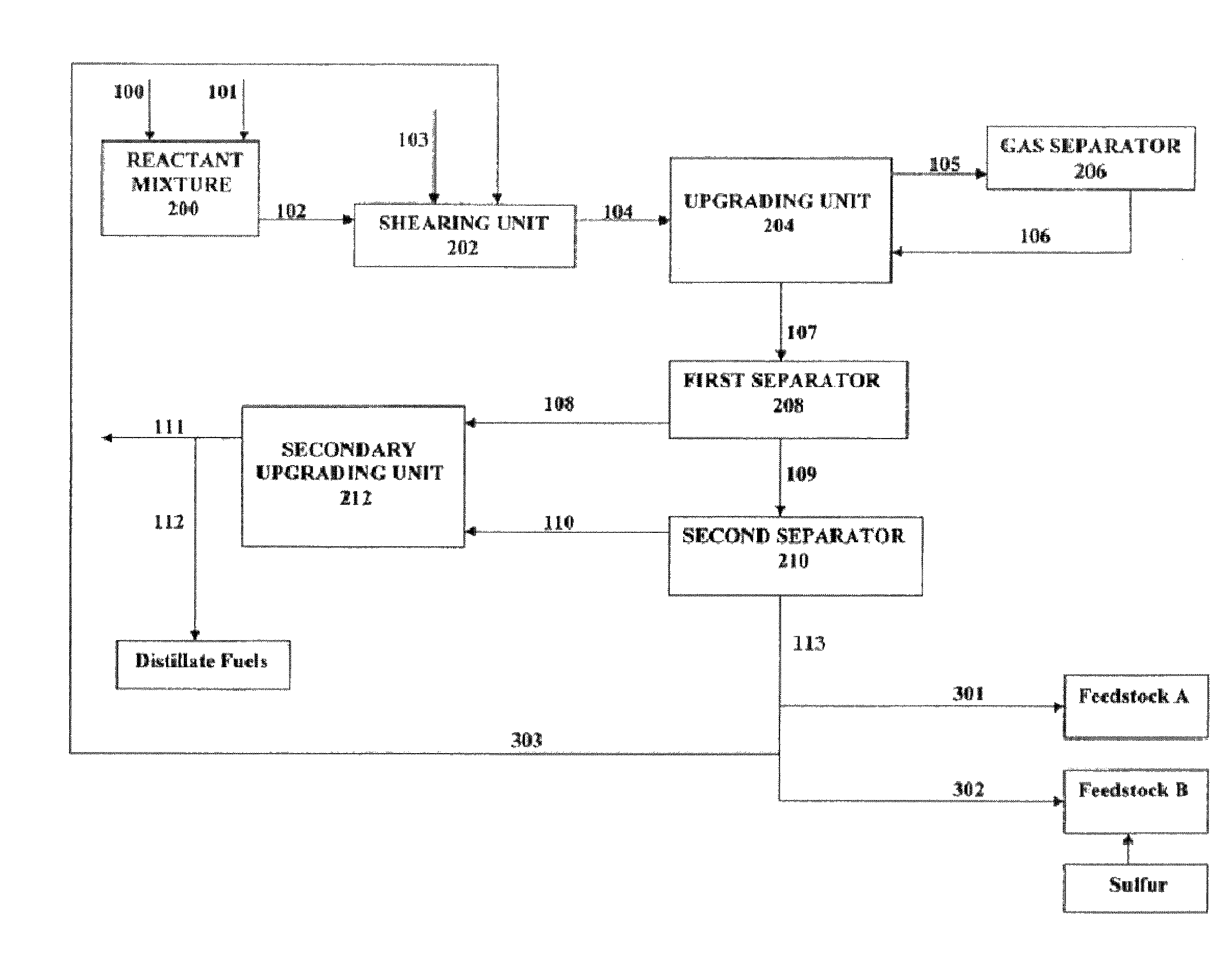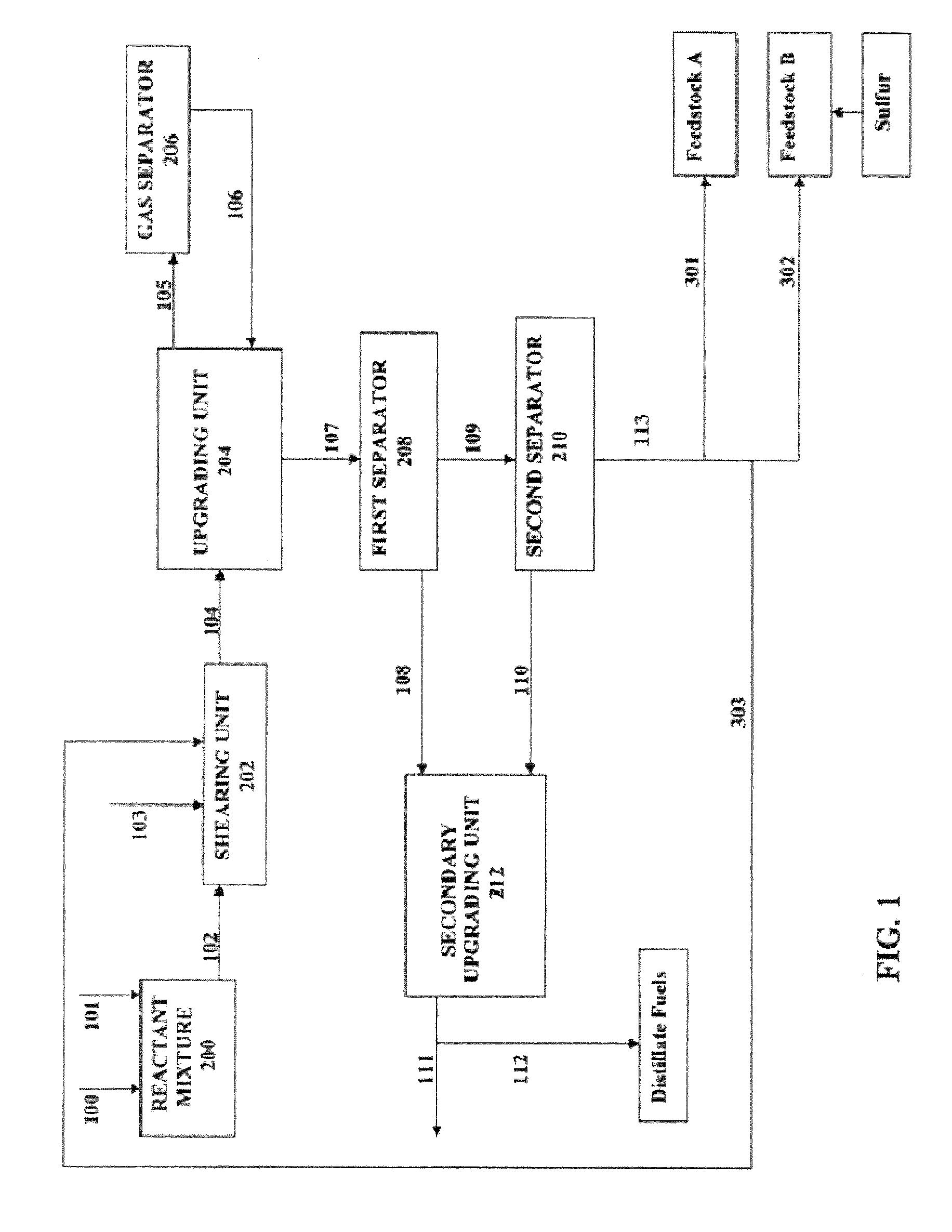Methods for making higher value products from sulfur containing crude oil
a sulfur-containing crude oil and high sulfur technology, applied in the petroleum industry, hydrotreatment process, hydrocarbon oil cracking, etc., can solve the problems of difficult to define heavy crude oil simply in terms of individual molecular components, restrict the use of this approach, and the hydrogen to carbon ratio of heavy crude oil is lower than desirable, so as to improve the utilization of hydrogen and reduce the operating pressure , the effect of high purity
- Summary
- Abstract
- Description
- Claims
- Application Information
AI Technical Summary
Benefits of technology
Problems solved by technology
Method used
Image
Examples
example
[0091]In the following Example, the heavy hydrocarbon crude oil feedstock is a heavy crude oil having the characteristics shown in Table 1 below:
[0092]
TABLE 1Total Oil Composition: Feed Oil% Total Distillates (BP 60%% Asphaltenes10%S (% wt)3.5
[0093]This heavy crude oil was pretreated with an ultrasonic and shearing system in the presence of hydrogen gas to disperse the system. To this mixture a sufficient amount of commercially available MOLYVAN™ 855 was added to give a concentration of 100 ppm within the heavy crude oil dispersion. After suitable conditioning of the heavy crude oil dispersion was completed, the dispersion was reacted in a well-mixed reactor of upgrading unit 204 with hydrogen gas at a temperature of about 430° C. and a pressure of about 1500 psig; LHSV 1.0.
[0094]The resulting light oil product was then separated from the reaction product to give oil having the properties in Table 2.
[0095]
TABLE 2Liquid Product% Total Distillates > 90 (BP % Desulfuization > 90S = 0...
PUM
| Property | Measurement | Unit |
|---|---|---|
| pressure | aaaaa | aaaaa |
| pressure | aaaaa | aaaaa |
| temperature | aaaaa | aaaaa |
Abstract
Description
Claims
Application Information
 Login to View More
Login to View More - R&D
- Intellectual Property
- Life Sciences
- Materials
- Tech Scout
- Unparalleled Data Quality
- Higher Quality Content
- 60% Fewer Hallucinations
Browse by: Latest US Patents, China's latest patents, Technical Efficacy Thesaurus, Application Domain, Technology Topic, Popular Technical Reports.
© 2025 PatSnap. All rights reserved.Legal|Privacy policy|Modern Slavery Act Transparency Statement|Sitemap|About US| Contact US: help@patsnap.com



